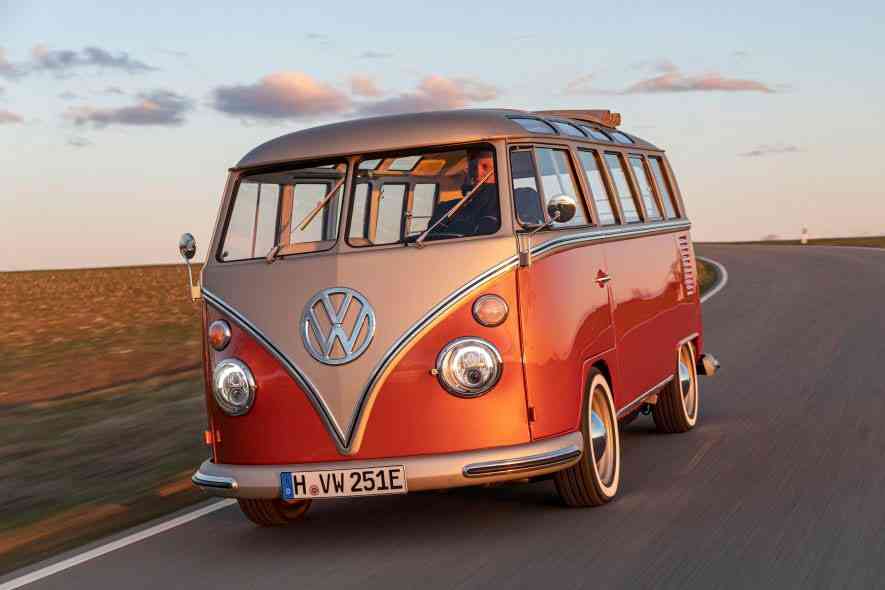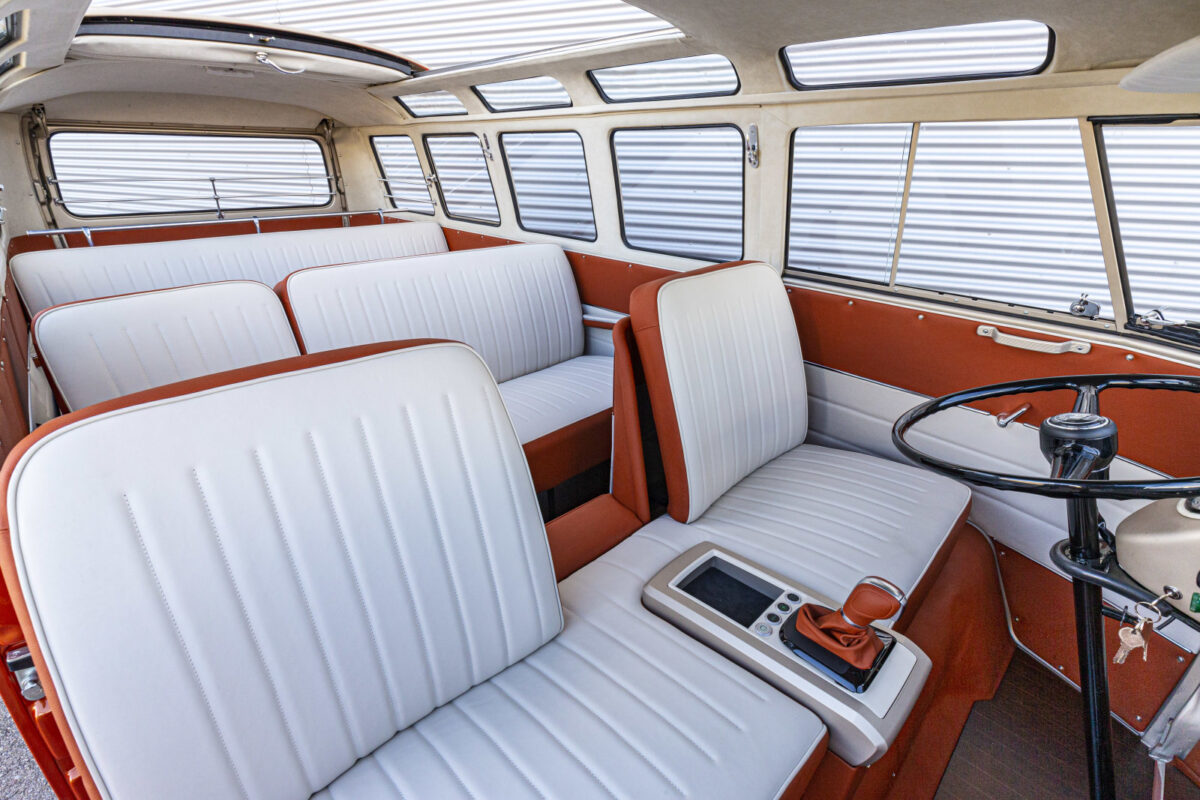The e-BULLI: a crossover of classic design and technical innovation



Recently, we’ve seen Volkswagen experiment with combining its old-school classics and modern tech. It started with the seemingly bold idea of switching an historic Bulli over to a drive system producing zero emissions in order to bring it in line with the challenges of a new era.
As the basis for the future e-BULLI the team chose a T1 Samba Bus produced in Hannover in 1966. One thing was certain from the start: the e-BULLI was to be a T1 that utilises the Volkswagen Group’s latest electric drive system components. This plan has now been realised with the e-BULLI.
The vehicle serves as an example of the great potential that this concept offers.
The e-BULLI features a silent Volkswagen electric motor delivering 61 kW (83 PS). The electric motor is almost twice as powerful as the previous boxer. What’s more, the new drive provides more than twice the force of the original T1 engine from 1966. The maximum torque is also immediately available. Never before has there been an ‘official’ T1 as powerful as this e-BULLI. New in this form, it thus becomes a silent cruiser that combines the fascination of a zero-emission drive system with the incomparable style of a classic Bulli.
The drive system is coupled with the gear lever, which is now positioned between driver and front passenger seat. The automatic transmission’s selector settings (P, R, N, D, B) are shown next to the lever. In position B the driver can vary the degree of recuperation, i.e. of energy recovery when braking. The e-BULLI reaches a top speed of 130 km/h (electronically limited). With the original drive system the T1 managed a top speed of 105 km/h.
A lithium-ion battery is responsible for supplying the electric motor with power. The battery’s usable energy capacity is 45 kWh. Customised for the e-BULLI in collaboration with eClassics, a power electronics system in the back of the vehicle controls the high-voltage energy flow between the electric motor and the battery and in the process converts the stored direct current (DC) into alternating current (AC). As in the new ID.3 and future ID.BUZZ, the high-voltage battery is housed centrally in the vehicle floor. This layout lowers the e-BULLI’s centre of gravity and thus improves its driving characteristics.
As with most electric vehicles, we want to know how and where to charge them? The battery is charged via a combined charging system (CCS) socket. It enables charging with alternating or direct current. Alternating current: The battery is charged via an AC charger with charging power of 2.3 to 22 kW, depending on electricity source. Direct current: Thanks to the e-BULLI’s CCS charging socket the high-voltage battery can also be charged at DC fast- charging points with up to 50 kW of charging power. In this case it can be charged up to 80 per cent in 40 minutes. The range with one full battery charge is more than 200 kilometres.
Compared to the T1, riding in the e-BULLI feels completely
different. This is further enhanced by the chassis, which has also been
redesigned: multi-link front and rear axles with adjustable shock absorbers and
coilover struts, plus a new rack-and-pinion steering system and four internally
ventilated disc brakes contribute to the new dynamic handling being transferred
to the road with serene poise.
In parallel with the new electric drive system, an interior concept has been
created for the e-BULLI that is both stylish and avant-garde.The designers
modernised the exterior of the iconic vehicle with great sensitivity and
finesse, including giving it a two-tone paintwork finish in ‘Energetic Orange
Metallic’ and ‘Golden Sand Metallic MATTE’. It is details such as the new round
LED headlamps with daytime running lights, via which the transformation into
the modern era is outwardly communicated. On the outside at the rear there are
also LED charge indicators. They signal to a driver walking up to the e-BULLI
how much charge the lithium-ion battery still has even before they reach the
vehicle.
It is only when you look through the windows into the eight-seat interior that you notice that a few things are not as you might assume them to be in a T1. Volkswagen Commercial Vehicles’ designers have re-imagined a lot of the interior, without, however, for a second losing sight of the original concept. The seating is one of the new features. In keeping with the external paintwork, it is also in two colours: ‘Saint Tropez’ and ‘Saffrano Orange’. Positioned within a console between the driver and front passenger seat is the new automatic transmission selector lever. Also integrated here: the start/stop button for the electric motor. Solid wood in the look of a ship’s deck is used for the floor throughout. As a result of this and the nice bright leather tones, this electrified Samba Bus takes on a maritime feel. This impression is strengthened by the large panoramic folding roof.
All who find the new e-BULLI an electrifying prospect can fulfil their dream of owning an emission-free T1 at eClassics. They are offering the T1 conversion, complete with redesigned front and rear axles, at prices starting from 64,900 euros.
Read more on
Advertise your Car Show on My Car Heaven.
Get in touch and we can make that happen for you.
Find Out MoreRelated Stories
Advertisement Advertisement
Advertisement Advertisement
Advertisement

